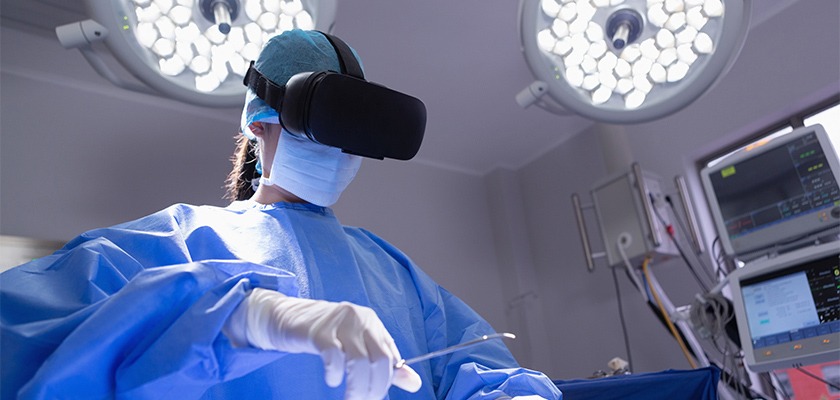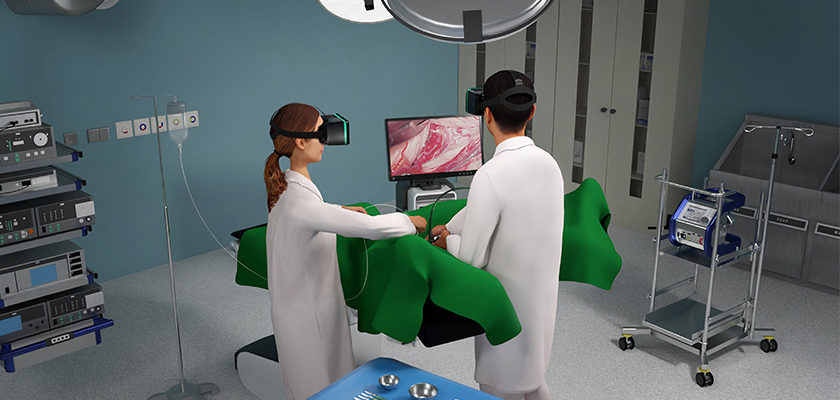If the medicine is all about saving and improving lives, medical technology is all about making that easier, more precise and less troublesome for both doctors and patients.
There is one catch, though. It takes diligence and many years of hard work to master the complex human body sufficiently enough to follow the basic principle of medicine—primum non nocere (first, do no harm). Technology is like a teenager on adrenaline; doesn’t stay still, is always on the go and not easy to catch up with.
Moving away from medicine for a minute, as a manufacturer of medical devices, you are acutely conscious of your competition.
For you to do well commercially, you must provide an engaging experience and a forceful argument for your customer to prefer your product over that of the competition. That advantage could be in terms of cost, technology, or, as we will see here, the use of technology to make it easier to use the device while ensuring one will “do no harm.”
Imagine you are a surgeon looking for a specific organ inside the body. You need to get in, repair a portion and get out without damaging anything else. How about doing this blindfolded?
Relax! Technology helps surgeons “see” what their eyes directly cannot. Not only that, technology will also help them get in and out without causing any harm along the way.
For example, some deft cystoscopy can ensure the ureters are not harmed during a laparoscopic hysterectomy. Let us see how virtual reality (VR) can make it happen.
Small cuts for big gains
Whenever a surgeon needs to access an organ packed away in the rather crowded abdomen, the conventional approach is to make a cut that can be up to 12 inches long. You need that wide an opening to see what you are doing and to reach inside. Among other things, that will keep the patient in the hospital longer and will leave one with a rather prominent scar.
Enter laparoscopy. In this procedure, instead of one big opening, the surgeons make a series of small cuts. They insert a laparoscope, a slender device that has a tiny video camera and light, and other special instruments through the cuts. Job done, the tiny cuts heal fast, and the patient is out of the hospital quick.
Hysterectomy is a procedure where a gynecologist removes the uterus. Most patients and surgeons prefer the laparoscopic route for this surgery. The most common complication during a laparoscopic hysterectomy is the collateral damage to the ureters, which cannot be easily seen.
What if there was some way to light up the ureters? Good idea! Except that gynecologists are not urologists. The latter are more familiar with the cystoscopy procedure required to enter the ureter. If you simply add a urologist to the surgical team, you will add to the cost.
Can technology make gynecologists more comfortable with the idea of inserting a light into the ureters? This is where the digital agency comes in.

Show how to lower the barrier
The client, a prominent manufacturer of medical devices had developed a special cold light. If the gynecologists could use a cystoscope (like the laparoscope, a special thin tube inserted into the body through the urethra) they could position the filament that emitted the light inside both ureters.
The light would act like a lit-up caution sign and help the gynecologists complete the hysterectomy without interfering with the ureters and without involving a urologist. The lights are safe for the ureters and they also protect the tubes from any inadvertent damage caused by the laparoscopy.
Dr Pushkar Khair, Chief of Digital Health Care at Ethosh, observed:
Surgeons prefer to stick to their specialty. It is not that they lack knowledge. It is just beyond their comfort and, to some extent, their confidence zone. The client challenged us to use technology to make them more comfortable. Our job was to make it a win not just for the client, but also for the patient, the gynecologist and the hospital.
Gynecologists do not need lessons in anatomy or cystoscopy in its entirety. They just need to get comfortable using the scope to place the filaments.
What if we provided them a realistic opportunity to practice placing the filaments? Using VR, they would be in charge of the whole procedure. And they could try it out as many times as they wanted.
Studying the real to make the virtual
The first step during the development of the solution was for the doctors at Ethosh to observe cystoscopy being performed by expert surgeons.
Nikhil Pathak, who heads VR and AR at Ethosh explained:
Getting the anatomy right is important. But we also need to get the placement of the hands right, the movements and the path. Unlike making a video, which is about creative visualization within the bounds of a written script, in VR, the user is essentially the writer and the director. Our challenge is to provide for as many likely scenarios, as realistically possible.
The problem was well established. Even if the customers (the gynecologists) accepted the potential solution, unless they got the hang of using it, it would have just remained a great idea in theory. Thus, the VR solution became an important marketing tool for the client. The trial runs facilitated by VR boosted the confidence of the surgeons and enabled them to complete the core procedure without worrying about collateral damage.
Dr Pushkar noted:
It is important to remember that our solution is not meant to be used during the actual procedure. It can at best be described as a familiarization tool, for a small but critical part of a bigger surgical procedure. It does not seek to replace the skill, but only helps to add to the confidence of the professional to venture beyond the comfort zone in the larger interest of the patient.
As a doctor, I believe the biggest motivation for any surgeon to use the VR tool would be the prospect of maintaining a blemish-less performance record.”
Bridging practice and perfection
Virtual reality is already an important medical training tool that both teaches and sharpens surgical skills. It takes time to hit your stride after residency. As research has established, until the surgeon gains experience there is an increasing likelihood of adding to complications and, worse, mortality rates. Thankfully, VR helps surgeons to stay sharp wherever they are in their career.
What about marketing? VR tends to be associated with sci-fi and fantasy, neither of which can help the maker of sophisticated surgical devices and solutions. When it is a question of saving a life or improving its quality, the challenge is to provide a marketing solution that does the job efficiently without distraction.
Rahul Deshpande, CEO of Ethosh said:
This project was an unusual challenge for us. We had to achieve near-surgical perfection in designing the solution. At the same time, we had to bear in mind that we had a solution to sell. While the users were probably convinced about its merit, the challenge was to give them the confidence, the positive mindset to embrace the solution. In a way, we were helping sell the solution by helping teach how to use it.
Will technology finally break the walls between medical specialties? Unlikely! However, technology can help you reach across the wall and borrow a skill if that is in the best interest of the lives you are trying to heal. Why stop at doing no harm when VR can help you do good better!
Medical technology is one of the areas where Ethosh specializes in the use of AR and VR for telling immersive customer-centric stories to sell, educate and support.

